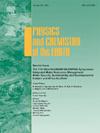Unravelling the impact of landslide inventory on landslide susceptibility in the Indian Himalaya
IF 3
3区 地球科学
Q2 GEOSCIENCES, MULTIDISCIPLINARY
引用次数: 0
Abstract
Landslide susceptibility zonation (LSZ) mapping is heavily influenced by the raster resolution and landslide inventory types. The effect of landslide inventories (polygon and point) at three raster resolutions (12.5 m, 30 m, and 90 m) on LSZ analysis is investigated in this work. The Ramban District sub-basin in Jammu and Kashmir, identified as the most vulnerable area, encompasses 302 landslides. To ensure a robust susceptibility assessment, Yule's coefficient (Yc) was utilized to examine twelve landslide conditioning factors (LCFs) for LSZ preparation. LULC (ESRI & Google) and road variables have the greatest influence at all resolutions, but lithology plays a critical role in lower-resolution polygon-based data. Aspect, geomorphology, slope, and landform exhibit moderate to low effects, which vary with resolution. LULC, roads, and lithology emerge as key influences, whereas drainage, faults, and landforms serve as secondary influences. RR and TWI demonstrate negligible influence on LSZ across all sampling and resolution. LSZ exhibits considerable variation with resolution in point-based inventory. At higher resolutions (12.5 m and 30 m), raster area coverage is below 50 % of vector coverage. Conversely, at 90 m, raster coverage roughly doubles that of vector data, potentially inflating LSZ results. AUC values are higher for point than for polygon sampling. However, for precise mapping, polygon sampling gives a more accurate picture of factors and landslide distribution. This study emphasizes the significance of using polygon sampling to delineate landslide susceptibility in the Himalayas.
揭示印度喜马拉雅地区滑坡库存量对滑坡易感性的影响
滑坡敏感性区划制图受栅格分辨率和滑坡盘存类型的影响较大。本文研究了三种栅格分辨率(12.5 m、30 m和90 m)的滑坡清单(多边形和点)对LSZ分析的影响。查谟和克什米尔的拉姆班地区分盆地被确定为最脆弱的地区,包括302次山体滑坡。为了确保敏感性评估的稳健性,利用Yule系数(Yc)对12个滑坡条件因子(lcf)进行了检验。LULC (ESRI &;谷歌)和道路变量在所有分辨率下影响最大,但岩性在低分辨率多边形数据中起关键作用。坡向、地貌、坡度和地形表现出中等到低的影响,随分辨率的不同而不同。LULC、道路和岩性是主要影响因素,而排水、断层和地形是次要影响因素。在所有采样和分辨率下,RR和TWI对LSZ的影响可以忽略不计。在基于点的库存中,LSZ显示出相当大的分辨率变化。在更高分辨率(12.5米和30米)下,栅格面积覆盖率低于矢量覆盖率的50%。相反,在90米处,栅格覆盖范围大约是矢量数据的两倍,这可能会使LSZ的结果膨胀。点采样的AUC值高于多边形采样的AUC值。然而,对于精确的测绘,多边形采样可以更准确地描绘出因素和滑坡分布。本研究强调了利用多边形采样来描绘喜马拉雅地区滑坡易感性的重要性。
本文章由计算机程序翻译,如有差异,请以英文原文为准。
求助全文
约1分钟内获得全文
求助全文
来源期刊

Physics and Chemistry of the Earth
地学-地球科学综合
CiteScore
5.40
自引率
2.70%
发文量
176
审稿时长
31.6 weeks
期刊介绍:
Physics and Chemistry of the Earth is an international interdisciplinary journal for the rapid publication of collections of refereed communications in separate thematic issues, either stemming from scientific meetings, or, especially compiled for the occasion. There is no restriction on the length of articles published in the journal. Physics and Chemistry of the Earth incorporates the separate Parts A, B and C which existed until the end of 2001.
Please note: the Editors are unable to consider submissions that are not invited or linked to a thematic issue. Please do not submit unsolicited papers.
The journal covers the following subject areas:
-Solid Earth and Geodesy:
(geology, geochemistry, tectonophysics, seismology, volcanology, palaeomagnetism and rock magnetism, electromagnetism and potential fields, marine and environmental geosciences as well as geodesy).
-Hydrology, Oceans and Atmosphere:
(hydrology and water resources research, engineering and management, oceanography and oceanic chemistry, shelf, sea, lake and river sciences, meteorology and atmospheric sciences incl. chemistry as well as climatology and glaciology).
-Solar-Terrestrial and Planetary Science:
(solar, heliospheric and solar-planetary sciences, geology, geophysics and atmospheric sciences of planets, satellites and small bodies as well as cosmochemistry and exobiology).
 求助内容:
求助内容: 应助结果提醒方式:
应助结果提醒方式:


